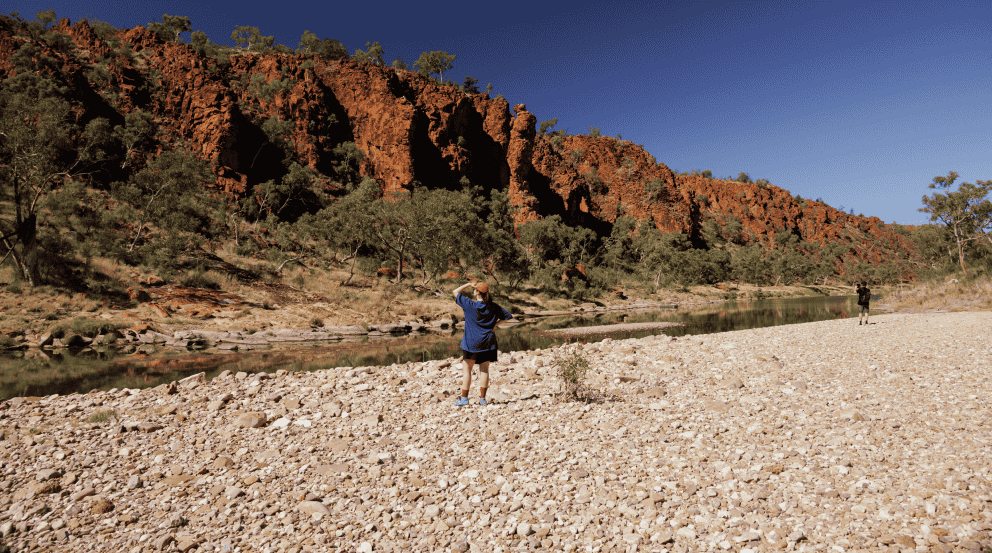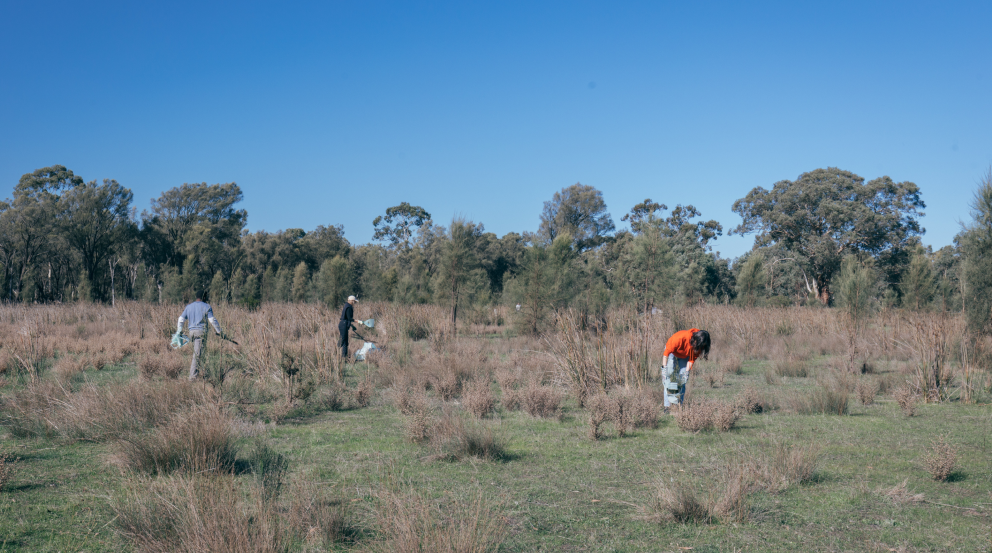To mark Reconciliation Week, we are proud to launch Bank Australia’s First Nations Recognition and Respect strategy. Reconciliation Strategy Manager Rafe Pfitzner Milika, who has cultural connections to the original people of the West Coast and Western Desert (South Australia), shares how he helped develop our vision and what the path to 2030 looks like.
“I'm here to advance First Nations justice and self-determination,” says Rafe. This goal has been a driving purpose of Rafe’s working life, and what led him to his role as Bank Australia’s Reconciliation Strategy Manager. “After many years in different jobs, I identified that working with a financial institution like Bank Australia presents unique opportunities to really have meaningful impacts and help First Nations communities.”
Connection to Country
Growing up in regional South Australia, Rafe’s connection to Country has always informed his work and been part of his life. “I have a great respect for the natural environment,” he explains. “I see caring for Country, looking after the land and its people, as a sacred duty – one that I try to uphold in all my professional roles and in life in general.” As a young man, living on the Black Range at Emu Downs, it was his Dad who helped nurture this respect for the natural world. “My Dad would tell me: ‘If you lift up a rock and you see a little spider or creature under there, well that is it’s home so make sure you put the rock back where you found it.’”
From studying a Bachelor of Environmental Management at university to working at the Victorian Environmental Assessment Council, The Australian Institute of Marine Science and, more recently, advancing First Nations water justice in the Murray Darling Basin Authority, Rafe’s focus has always been clear: “In a modern world, we need to respect First Nations cultures and authority and enable the voices of First Nations people and organisations.”
Rafe brought this experience and passion to Bank Australia, where he was charged with developing our First Nation’s Recognition and Respect strategy. “When I stepped into the role, I started building on years of groundwork that had been put into this space to develop the strategy,” says Rafe.
Bank Australia has a long history of supporting and advancing reconciliation, one of four priority impact areas for the bank along with climate action, nature and biodiversity and affordable and accessible housing. In 2010, we became the first customer-owned bank in Australia to develop a Reconciliation Action Plan. We see genuine recognition and respect for First Nations people as a fundamental responsibility and the new strategy sets out clear goals, targets and aspirations for how we plan to achieve this. “We focused on using the tools that the bank has to make a difference, and I think the strategy does just that,” says Rafe.

What is a First Nations Recognition and Respect strategy?
“In essence, it is very similar to a Reconciliation Action Plan and the terms are somewhat interchangeable”, says Rafe. However, the name of the strategy does have specific and significant meaning and was chosen with care and consideration.
“Respect and Recognition are words that were chosen carefully and have underlying meaning – they are words that resonate with First Nations people and allies,” says Rafe. “They also really encompass everything we're trying to do in this space.”
The strategy name is especially relevant within the context of Victoria, where Bank Australia has its head office. “In Victoria, we have unique Native Title legislation called the Traditional Owner Settlement Act,” Rafe explains. “As part of that, we have what’s called Recognition and Settlement Agreements, so making this a ‘recognition and respect’ strategy made sense within that paradigm as well.”
Developing the key pillars of Bank Australia’s First Nations Recognition and Respect strategy
“Building trust and respect between the bank and First Nations people and organisations, including First Nations customers, is a key and fundamental part of what we're trying to do with this strategy,” explains Rafe. It aims to do this via three core action areas.
- Recognition and respect
Bank Australia will continue building relationships and partnerships with First Nations
organisations and amplify their voices through advocacy, events and our public platform. We aim to grow cultural awareness and capability for our people and customers.
- First Nations impact lending
We will establish and grow culturally appropriate and accessible impact lending across First Nations enterprises such as Caring for Country and housing initiatives. “This is such an important part of the strategy and one I’m especially enthused about,” says Rafe. “It will provide a greatly needed flow of capital into First Nations enterprises and organisations to contribute strongly to First Nations economic self-determination, wealth generation and participation in the economy,” he explains.
- First Nations procurement
Bank Australia will focus on increasing our procurement from First Nations businesses and promoting the First Nations economy through supplier engagement and events. “We're working in a concerted fashion to identify where we can engage First Nations businesses,” explains Rafe. “ Again, it’s about using the tools, systems and the processes that we have available to us as a bank to contribute to reconciliation and First Nations justice.”

Establishing a First Nations Leadership Group
A really significant part of this process for Rafe has been to ensure that First Nations voices and wisdom are centred as the strategy is implemented. To do this, an external First Nations Leadership Group consisting of First Nations members will be formed to give voice to First Nations people and guide the strategy into the future.
“One of the most important things we need to do is to listen to Aboriginal and Torres Strait Islander people, and engage in truth-telling,” says Rafe. “That's inherent in the core action areas of our strategy: we're building relationships, undertaking engagement and trying to build trust and respect between the bank and First Nations people and organisations. It’s a key and fundamental part of what we're trying to do with this strategy.”
Expanding First Nations leadership on the Conservation Reserve
The relationship building will extend and intersect with other Bank Australia priority impact areas including nature and biodiversity, climate action, and affordable and accessible housing. One example of this is the relationship between the bank and the Barengi Gadjin Land Council in the management and custodianship of the Conservation Reserve.
“The Conservation reserve is on the traditional Country of the Wotjobaluk Peoples, who are represented by the Barengi Gadjin Land Council” says Rafe. “As part of our First Nations Recognition and Respect Strategy, we're committed to strengthening our relationship with the Barengi Gadjin Land Council; for example – in the cultural burning space. We’re very grateful for their guidance and wisdom and want to continue expanding on this great relationship.”
“I see this strategy as having genuine worth for both First Nations people and Bank Australia,” says Rafe. “Where we can show genuine recognition and respect for First Nations people and demonstrate to Bank Australia’s community that First Nations justice is at the heart of what we are trying to achieve here.”
Head here to learn more about Bank Australia’s Recognition and Respect strategy.








